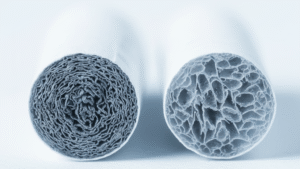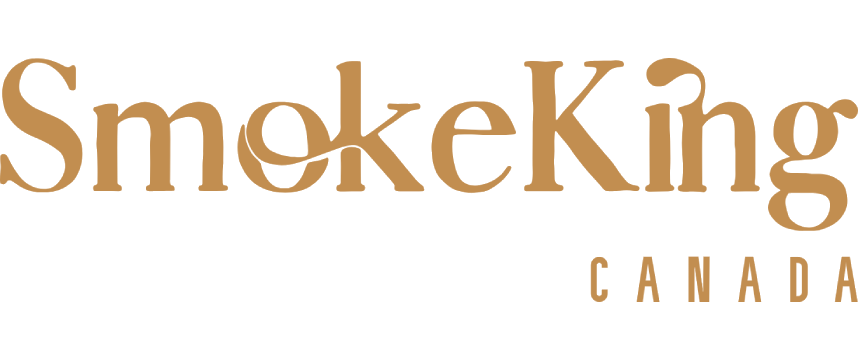Selecting a cigarette is not as simple as grabbing a pack from the shelf. It’s about knowing your smoking habits, tastes, and budget. Regardless of whether you are an occasional smoker or one who likes to indulge in a long-lasting cigarette, this guide will help you sift through the choices to select the ideal cigarette for you.
Step 1: What Are Your Smoking Habits?
Before you begin considering flavors and sizes, you should evaluate your own smoking habits. Your selection will be based on how frequently you smoke, the type of experience you are seeking, and your budget.
How Frequently Do You Smoke?
- Light smokers: If you’re a casual smoker, you may enjoy shorter cigarettes with a lighter, smoother draw. These are perfect for a quick daytime break.
- Heavy smokers: For habitual smokers, cigarettes that are longer or have a harder hit are usually favored. They offer a fuller, longer-lasting smoke.
What’s Your Budget?
Cigarette taxes are high in Canada, and a pack can cost between $12 and $20. Your budget will have a large influence on the kind of cigaretteS you’ll be able to afford.
If you want to save money, consider picking up smaller packs or even hand-rolled cigarettes, as they tend to be cheaper.
When Do You Intend to Smoke?
- Work breaks: If you are smoking while taking quick breaks at work, a smaller and lighter cigarette will suffice. It’s efficient, quick, and does not need a lengthy smoking time.
- Weekend relaxation: If you want a more laid-back experience on the weekend, try a longer cigarette that burns more slowly and lets you savor your smoke at your own pace.
Step 2: What Types of Cigarettes Are Available?
Now you’ve considered your budget and habits, let’s take a look at the primary types of cigarettes available in Canada. This will give you a sense of the variances and allow you to select one that is suitable for you.
What Size Should I Choose?
- Regular: These cigs are shorter, perfect for a quick puff. They burn quickly, so they’re perfect when you’re in a hurry.
- King Size: If you enjoy a relaxed, longer smoke, king-size cigarettes are the way to go. They burn more slowly, so you have more time to absorb the experience.
How Strong Should My Cigarette Be?
In Canada, “Light” and “Full Flavor” are no longer used on cigarette packaging. Strength is now described using the nicotine and tar content. This is useful to know, as you can choose a cigarette based on your desired smoking strength.
- Mild Cigarettes: When you are a light smoker, choose one with lower nicotine and tar content. These cigarettes provide you with a smoother, milder hit in your throat.
- Full Flavor Cigarettes: If you are a heavier smoker, you might prefer a cigarette with a greater nicotine and tar level for a more fulfilling hit.
What About Hand-Rolled vs. Pre-Rolled Cigarettes?

- Pre-Rolled: Ready-to-smoke cigarettes are convenient, but they can be more expensive due to packaging and manufacturing costs.
- Hand-Rolled (RYO): For a more tailored experience, hand-rolled cigarettes enable you to regulate the quantity of tobacco and the burn rate. They’re less expensive but demand skill and labor to roll.
Step 3: What’s the Smoking Experience Like?
After you’ve whittled down your options based on size and potency, it’s time to consider the sensory experience—what does it feel like to smoke each kind?.
How Does it Feel in my Throat?
- Higher Nicotine: Cigarettes with more nicotine generally have a harder throat hit. This is ideal for heavy smokers who prefer a satisfying feel. Full flavor cigarettes are specifically designed to deliver this satisfying, robust sensation.
- Smoother Cigarettes: In case you are a beginner in smoking or would like something milder, go for cigarettes with reduced nicotine content. These will provide a smooth, silky, and not-so-irritating feeling in the throat.
How Does the Filter Impact the Experience?
The way the filter is designed really matters for how the smoke comes through. In Canada, there’s a law that says manufacturers can’t make filters with letters or symbols. But still, the filter design has an impact on airflow and the quality of the smoke.
- Harder Filters: These filters decrease the volume of smoke inhaled, providing a less harsh, smoother experience.
- Softer filters allow more air to pass through, so the smoke is smoother and less harsh.

What About Taste?
There are smokers who genuinely enjoy cigarettes that have deep, bold flavors to provide them with a fuller smoke.
Milder Flavors: If you’re after something more subtle, choose cigarettes with lighter, sweeter profiles.
How Fast Does a Cigarette Burn?
- Skinny cigarettes burn quickly, so they’re ideal for those brief breaks or speedy smokes.
- Thicker Cigarettes: Tightly-rolled or thicker cigarettes burn more slowly, providing a more mellow, longer-lasting experience.
Step 4: What Should I Avoid?
So, although “organic” or “natural” cigs may seem like they would be healthier, they actually don’t offer any health benefits over the others. Truthfully, all tobacco products are hazardous to your health, regardless of how they market them. The Canadian health authorities are very clear that tobacco use can cause some pretty awful diseases, such as cancer of the lung, heart disease, and respiratory issues.
And even organic tobacco contains harmful chemicals and carcinogens that will damage you over time.
Don’t be tricked by the fancy packaging, ’cause these cigs are just as harmful as any other. The bottom line is, there’s no tobacco product that’s going to be safe for you, regardless of what it says on the label.
Step 5: What’s the Price Range?
Prices of cigarettes in Canada differ substantially between provinces, depending on taxes and provincial policies. Generally speaking, provinces such as Quebec have lower prices than regions like British Columbia or Ontario, where taxes are higher and thus increase the price. Check the prices in your area and monitor any pricing adjustments due to government policies.
If you have a tight budget, there are methods to minimize costs. Hand-rolled cigarettes (RYO) are less expensive in the long run since you buy tobacco in bulk, although they involve rolling skills. Smaller cigarette packs also offer a less costly alternative and give you flexibility without having to commit to an entire pack. Remember, the costs of smoking accumulate over time, so it is intelligent to think about your overall budget.
Step 6: How Do I Choose?
Choosing the correct cigarette can be overwhelming, but experimenting with various brands, sizes, and levels of nicotine is really the best method of determining what you prefer. Begin by looking at numerous brands of cigarettes that fit your style of smoking. Pay attention to the nicotine and tar level because it’ll affect how smooth, how strong, and how it feels on your throat.
Consider the size—regular or king-size—and how they burn. Notice how each feels in your throat and the overall smoking experience, such as the taste and how fast it burns. Write down what you prefer in the way of taste, satisfaction, and comfort. It may take a bit, but through trial and error, you’ll narrow down which cigarette provides the best experience that fits your smoking style.
FAQ about Choosing Cigarettes
Q1. How Much Do You Pay for a Pack of Smokes in Canada?
So, a pack of cigs in Canada usually costs between $12 and $20, and it kinda depends on where you are, the brand you pick, and the taxes they have. Prices can go up because of those hefty taxes on tobacco, which are meant to make people smoke less. In places like Quebec, you’ll find prices are usually cheaper, so it’s easier on the wallet for smokers. But if you’re in places like British Columbia or Ontario, expect to pay more since their tobacco taxes are higher. Just remember to check the local prices, ‘cause they can change based on what the government decides and where you are.
Q2. What’s up With King-Size and Regular Cigarettes?
Regular cigarettes are usually shorter and burn more quickly. These are perfect for smokers who want to have a faster experience, particularly for those short breaks. They’re great for people who don’t want to devote too much time to smoking. King-size cigarettes are longer, however, and burn more slowly. They offer a slower, longer smoking experience, which is what most smokers like when they have the desire to take their time and savor the experience. The king-size version is usually preferred by people who like a slower, steadier burn and a longer session.
Q3. Do Hand-Rolled Cigarettes Cost Less Than the Pre-rolled Variant?
Roll-your-own cigarettes (RYO) are cheaper than pre-rolled cigarettes since they enable smokers to purchase tobacco in bulk, which is usually less costly than buying pre-rolled cigarettes. Rolling your own cigarettes also allows you to regulate the quantity of tobacco you use, thereby cutting down on total consumption. Hand-rolling, however, demands skill and materials such as rolling papers and filters. Although the initial cost for RYO may be lower, the initial investment in the necessary supplies (such as rolling machines and accessories) can be high. Nevertheless, RYO is generally more cost-effective in the long term.
Q4. How Do I Decide Which Strength to Use?
Cigarette strength in Canada is gauged by the tar and nicotine content, which measures how heavy the smoking experience will be. Smokers who are heavier and accustomed to a stronger hit tend to prefer cigarettes with higher tar and nicotine content since these give a more complete, satisfying feeling in the throat. Smokers who are lighter or prefer a milder taste tend to choose cigarettes with lower tar and nicotine content since these give a smoother draw and are less harsh. Most cigarette brands are explicit about the tar and nicotine content on the packaging, and smokers can choose according to their taste.
Q5. Are “Organic” Cigarettes Safer?
Don’t let their name fool you: “organic” cigarettes aren’t any safer than the regular variety. All types of tobacco products, including those labeled as organic or natural, are harmful to your health. Indeed, tobacco smoke has carcinogens and harmful chemicals that boost your risk of lung cancer, heart disease, and other ailments, no matter how the tobacco is cultivated or processed. The Canadian health department recommends against smoking any tobacco product because of these dangers. Organic cigarettes might not have artificial additives, but they have the same health threats as traditional tobacco products.
Find Your Perfect Cigarette
Selecting the ideal cigarette does not need to be a complex process. By evaluating your smoking style, tastes, and budget, you can eliminate some choices and determine the best for you. Always keep in mind that the most crucial factor is to select a cigarette that accommodates your lifestyle as well as provides the smoking experience that you like.





